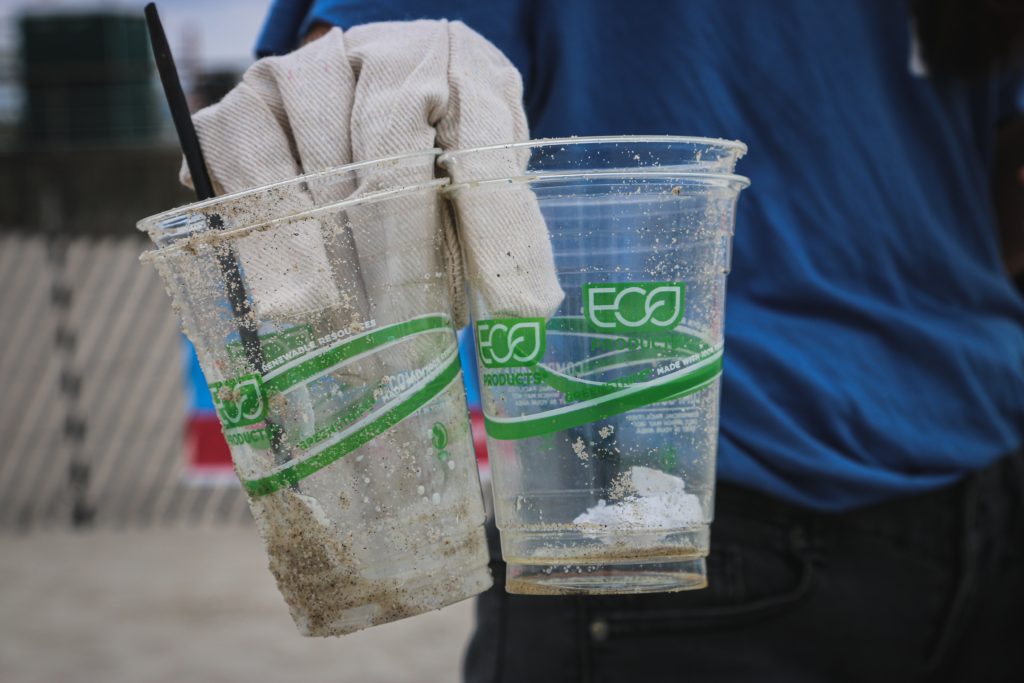Have you ever felt like choosing eco-friendly products is a complete minefield? I’ve certainly spent hours deciding on the best product to suit my needs without causing unnecessary harm to our planet. More often than not, there is still a dark hidden element behind an ‘eco-product.’ It turns out it’s no coincidence, in fact, its the long-established marketing practice of greenwashing.
81% of people think that companies should help improve the environment.
Greenwashing is widespread across virtually all industries, especially the most damaging ones.
A 2009 research report, even concluded that 98% of environmentally friendly claims were false or misleading in some way.
Since the environment is becoming a bigger and bigger concern for consumers, the subject of greenwashing is coming under increased scrutiny across the globe.
What is Greenwashing?
Greenwashing is when a company markets itself or a specific product as environmentally friendly or ‘green’, when in fact it is still damaging to the environment.
Generally, greenwashing tactics involve misleading claims or ignorance to a company’s wider damaging effects.
Environmentalist Jay Westerveld coined the term greenwashing in the 1980s, a decade in which large corporations started convincing consumers of environmental credentials through TV commercials.
The most notorious of which was oil company Chevron, who commissioned a series of TV and print adverts convincing the public of their positive effect on the environment.
Decades later the practice grows out of control and increasingly more sophisticated.
Despite the era of information and connectivity, many corporations continue to mislead consumers with opaque supply chains, misinformed marketing and false claims.
Why Greenwash?
Greenwashing is a fairly straightforward marketing tactic to convince customers that a product or company is helping the environment.
As you can imagine, this is becoming more and more important to the public who are aware, now more than ever, of the ‘climate emergency’.
With huge concerns about global warming, sustainability and habitat destruction, people are actively looking for companies and products that benefit the environment.
In fact, 81% of people think that companies should help improve the environment.
Brands stand to benefit from this trend if they convince consumers of their green credentials.
Identifying with customers is crucial to a brand’s success, people now want more than great products, they want companies that really care.
As Forbes reported, 87% will buy a product because a business supported an issue they care about.
The 7 Sins of Greenwashing
With high stakes about a brand’s green image, companies use a plethora of methods to disguise their products as environmentally friendly.
In 2009, TerraChoice released research of retailers in North America, Australia and the United Kingdom. The marketing firm investigated thousands of products making green claims finding some astounding and worrying results. 98% of products fell foul of what TerraChoice dubbed the 7 Sins of Greenwashing.
1. Sin of the Hidden Trade-Off
The hidden trade-off revolves around classing a product as green based on a narrow set of information or attributes. An example of this is a product made of recycled materials. It may appear sustainable ignoring the manufacturing process with high energy, polluting factories or use of toxic chemicals.
2. Sin of No Proof

Providing no proof to back up a claim is one of the easiest greenwashing tactics.
We can all make baseless claims where you have no research or proof to prove your product is eco-friendly.
Companies may claim they have eco products but actually, they have no real information about the raw materials, supply chain, or manufacturing process used.
3. Sin of Vagueness
Politicians are famous for being vague when questioned on uncomfortable topics and businesses regularly use this tactic when it comes to the environment.
Making claims with no specifics or over-generalized claims are clear symptoms of vagueness.
You’ll likely find a lot of buzzwords too like circular, wild or natural; the terms don’t really mean anything or have any legal standing.
4. Sin of Irrelevance
This is a nice little loophole for greenwashers to skate through because the claims may well be true whilst not being a distinguishing factor when discussing eco-products.
For example, stating something is CFC-free may be true but it is generally a banned chemical anyway.
5. Sin of Lesser of 2 Evils
Claiming to be greener than other competitors or similar products is not something to be celebrated when it is still harmful to the environment.
Audi notoriously tried this one with a 2010 SuperBowl advert for ‘clean diesel’.
I mean come on, it’s still diesel…
6. Sin of Fibbing
Straight-up lies, sometimes it’s easier just to make it up. Made up claims, fake certificates, inventing facts and statistics, it’s all perfect for misleading customers.
In fact, let me just make up a good one right here, right now… Like ‘Burning fossil fuels emits zero carbon dioxide.’
7. Sin of Worshipping False Labels

False labels consist of badges, certificates, labels and awards realistically meaning nothing. Some corporations even award themselves certificates or endorsements not backed by any authority. Paid endorsements also fall under this category, for example, some brands pay publications to review products in a favourable light.
Examples of Greenwashing
As you can imagine there are thousands of high profile examples of greenwashing in almost every industry from oil production to chocolate production.
BP infamously rebranded from British Petroleum to Beyond Petroleum and changed its brand colour to green. KFC ramped up its greenwashing in 2019 opening a Beyond Fried Chicken branch, also literally painted green. Nestle is accused of greenwashing after announcing sustainably sourced cocoa beans despite swathes of related deforestation in West Africa.
The examples stretch far and wide but Audi’s 2010 Super Bowl is my favourite example of greenwashing. Credit to the German car manufacturer, it almost had me with the ‘green police’ which should have arrested the marketing department for burning diesel.
Greenwashing or Brainwashing?
The practice of greenwashing is pretty sinister work and still rife across brands we once loved, perhaps still do.
Misleading us into thinking we are making choices that have a positive effect on the environment is worrying. The products may be greenwashed, but as consumers, we are brainwashed into thinking we are making positive changes.
In the long term, brands love nothing more than trust. So surely acting in an underhand way, more akin to politicians, is not only damaging the environment but to the brand as a whole.
Greenwashing is often hard to spot but applying the 7 Sins of Greenwashing to your purchasing choices will certainly help. Look for the ignorance, lies, and ambiguity next time you find what appears to be an ‘eco-friendly’ product.


 What is Sustainable Fashion?
What is Sustainable Fashion?
Leave a Reply